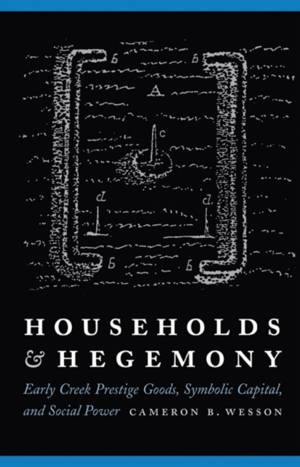
- Afhalen na 1 uur in een winkel met voorraad
- Gratis thuislevering in België vanaf € 30
- Ruim aanbod met 7 miljoen producten
- Afhalen na 1 uur in een winkel met voorraad
- Gratis thuislevering in België vanaf € 30
- Ruim aanbod met 7 miljoen producten
Zoeken
Households and Hegemony
Early Creek Prestige Goods, Symbolic Capital, and Social Power
Cameron B Wesson
Paperback | Engels
€ 45,95
+ 91 punten
Omschrijving
The long-term significance of the household as a social and economic force--particularly in relation to authority positions or institutions--has remained relatively unexplored in North American archaeology. Households and Hegemony makes a significant contribution to our understanding of the role households played in long-term cultural change after contact with European traders and settlers. Drawing together information from ethnohistoric records and data from one of the largest excavations in Alabama's history (the Fusihatchee Project), Cameron B. Wesson reexamines changes in early Creek culture from before and after contact with Europeans, beginning in the sixteenth century. Casting the household as a multifaceted cultural institution, he contends that important social, economic, and political transformations occurred during this time--changes that redefined the relationship between Creek households and authority. As avenues for exchange with outsiders broadened and diversified, prestige trade goods usually associated with Creek elites became increasingly available to individual households, so that contact with Europeans contributed to empowerment for Creek households and a weakening of traditional chiefly authority. Wesson demonstrates that change within Creek culture in the historic period was shaped by small-scale social units and individual decisions rather than by the effects of larger social and political events. Households and Hegemony enriches our understanding of Creek history and makes a key contribution to comparative archaeological models of cultural change.
Specificaties
Betrokkenen
- Auteur(s):
- Uitgeverij:
Inhoud
- Aantal bladzijden:
- 256
- Taal:
- Engels
Eigenschappen
- Productcode (EAN):
- 9780803246959
- Verschijningsdatum:
- 1/07/2013
- Uitvoering:
- Paperback
- Formaat:
- Trade paperback (VS)
- Afmetingen:
- 140 mm x 216 mm
- Gewicht:
- 331 g

Alleen bij Standaard Boekhandel
+ 91 punten op je klantenkaart van Standaard Boekhandel
Beoordelingen
We publiceren alleen reviews die voldoen aan de voorwaarden voor reviews. Bekijk onze voorwaarden voor reviews.








